Wenbo Shao
Uncertainty-Aware Prediction and Application in Planning for Autonomous Driving: Definitions, Methods, and Comparison
Mar 04, 2024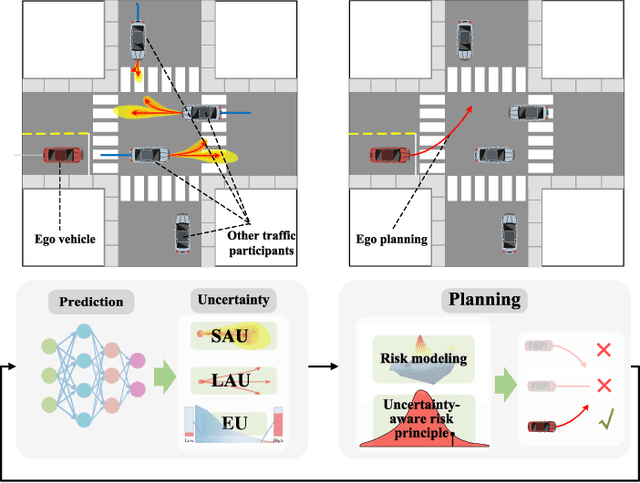

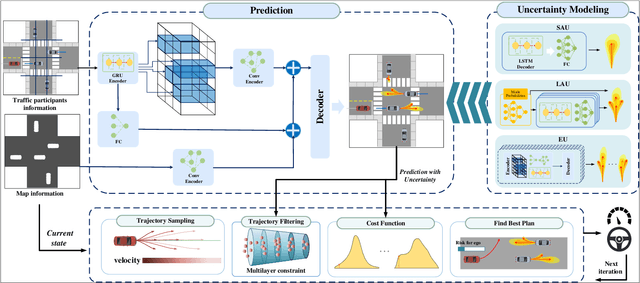

Abstract:Autonomous driving systems face the formidable challenge of navigating intricate and dynamic environments with uncertainty. This study presents a unified prediction and planning framework that concurrently models short-term aleatoric uncertainty (SAU), long-term aleatoric uncertainty (LAU), and epistemic uncertainty (EU) to predict and establish a robust foundation for planning in dynamic contexts. The framework uses Gaussian mixture models and deep ensemble methods, to concurrently capture and assess SAU, LAU, and EU, where traditional methods do not integrate these uncertainties simultaneously. Additionally, uncertainty-aware planning is introduced, considering various uncertainties. The study's contributions include comparisons of uncertainty estimations, risk modeling, and planning methods in comparison to existing approaches. The proposed methods were rigorously evaluated using the CommonRoad benchmark and settings with limited perception. These experiments illuminated the advantages and roles of different uncertainty factors in autonomous driving processes. In addition, comparative assessments of various uncertainty modeling strategies underscore the benefits of modeling multiple types of uncertainties, thus enhancing planning accuracy and reliability. The proposed framework facilitates the development of methods for UAP and surpasses existing uncertainty-aware risk models, particularly when considering diverse traffic scenarios. Project page: https://swb19.github.io/UAP/.
Towards Safe and Reliable Autonomous Driving: Dynamic Occupancy Set Prediction
Feb 29, 2024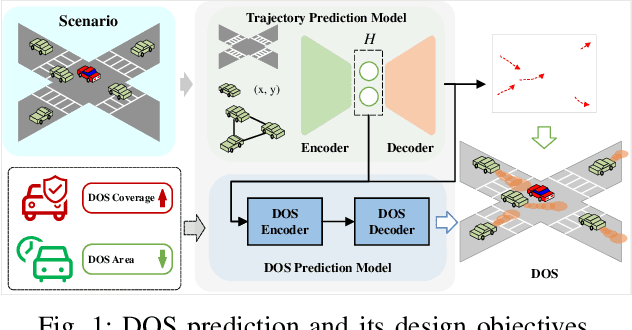
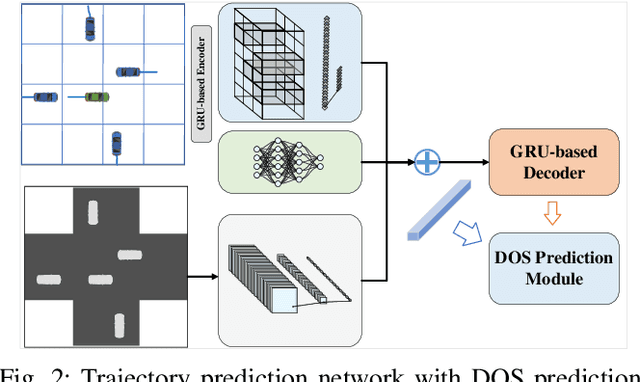
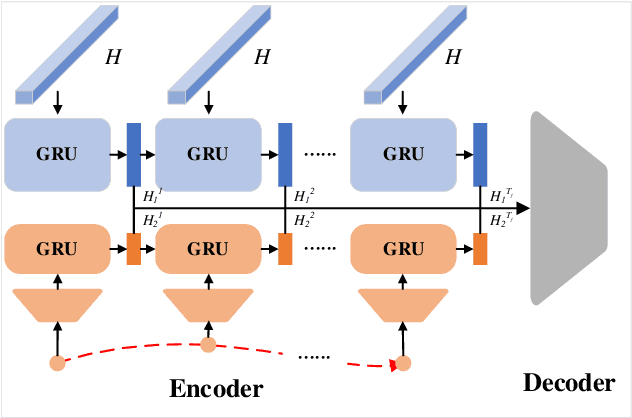
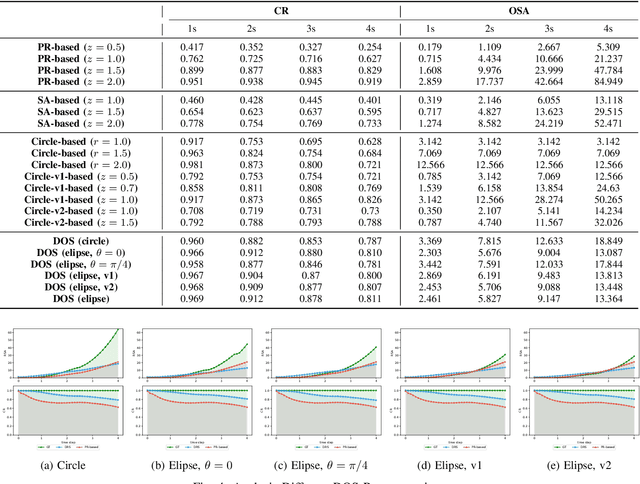
Abstract:In the rapidly evolving field of autonomous driving, accurate trajectory prediction is pivotal for vehicular safety. However, trajectory predictions often deviate from actual paths, particularly in complex and challenging environments, leading to significant errors. To address this issue, our study introduces a novel method for Dynamic Occupancy Set (DOS) prediction, enhancing trajectory prediction capabilities. This method effectively combines advanced trajectory prediction networks with a DOS prediction module, overcoming the shortcomings of existing models. It provides a comprehensive and adaptable framework for predicting the potential occupancy sets of traffic participants. The main contributions of this research include: 1) A novel DOS prediction model tailored for complex scenarios, augmenting traditional trajectory prediction; 2) The development of unique DOS representations and evaluation metrics; 3) Extensive validation through experiments, demonstrating enhanced performance and adaptability. This research contributes to the advancement of safer and more efficient intelligent vehicle and transportation systems.
Self-Aware Trajectory Prediction for Safe Autonomous Driving
May 16, 2023Abstract:Trajectory prediction is one of the key components of the autonomous driving software stack. Accurate prediction for the future movement of surrounding traffic participants is an important prerequisite for ensuring the driving efficiency and safety of intelligent vehicles. Trajectory prediction algorithms based on artificial intelligence have been widely studied and applied in recent years and have achieved remarkable results. However, complex artificial intelligence models are uncertain and difficult to explain, so they may face unintended failures when applied in the real world. In this paper, a self-aware trajectory prediction method is proposed. By introducing a self-awareness module and a two-stage training process, the original trajectory prediction module's performance is estimated online, to facilitate the system to deal with the possible scenario of insufficient prediction function in time, and create conditions for the realization of safe and reliable autonomous driving. Comprehensive experiments and analysis are performed, and the proposed method performed well in terms of self-awareness, memory footprint, and real-time performance, showing that it may serve as a promising paradigm for safe autonomous driving.
How Does Traffic Environment Quantitatively Affect the Autonomous Driving Prediction?
Jan 11, 2023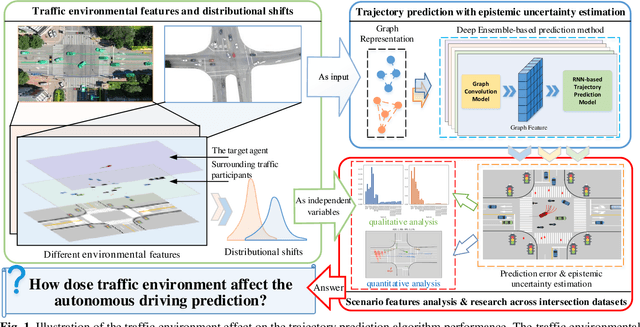

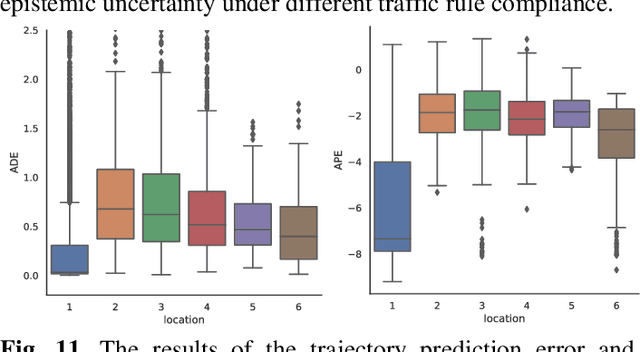

Abstract:An accurate trajectory prediction is crucial for safe and efficient autonomous driving in complex traffic environments. In recent years, artificial intelligence has shown strong capabilities in improving prediction accuracy. However, its characteristics of inexplicability and uncertainty make it challenging to determine the traffic environmental effect on prediction explicitly, posing significant challenges to safety-critical decision-making. To address these challenges, this study proposes a trajectory prediction framework with the epistemic uncertainty estimation ability that outputs high uncertainty when confronting unforeseeable or unknown scenarios. The proposed framework is used to analyze the environmental effect on the prediction algorithm performance. In the analysis, the traffic environment is considered in terms of scenario features and shifts, respectively, where features are divided into kinematic features of a target agent, features of its surrounding traffic participants, and other features. In addition, feature correlation and importance analyses are performed to study the above features' influence on the prediction error and epistemic uncertainty. Further, a cross-dataset case study is conducted using multiple intersection datasets to investigate the impact of unavoidable distributional shifts in the real world on trajectory prediction. The results indicate that the deep ensemble-based method has advantages in improving prediction robustness and estimating epistemic uncertainty. The consistent conclusions are obtained by the feature correlation and importance analyses, including the conclusion that kinematic features of the target agent have relatively strong effects on the prediction error and epistemic uncertainty. Furthermore, the prediction failure caused by distributional shifts and the potential of the deep ensemble-based method are analyzed.
Failure Detection for Motion Prediction of Autonomous Driving: An Uncertainty Perspective
Jan 11, 2023Abstract:Motion prediction is essential for safe and efficient autonomous driving. However, the inexplicability and uncertainty of complex artificial intelligence models may lead to unpredictable failures of the motion prediction module, which may mislead the system to make unsafe decisions. Therefore, it is necessary to develop methods to guarantee reliable autonomous driving, where failure detection is a potential direction. Uncertainty estimates can be used to quantify the degree of confidence a model has in its predictions and may be valuable for failure detection. We propose a framework of failure detection for motion prediction from the uncertainty perspective, considering both motion uncertainty and model uncertainty, and formulate various uncertainty scores according to different prediction stages. The proposed approach is evaluated based on different motion prediction algorithms, uncertainty estimation methods, uncertainty scores, etc., and the results show that uncertainty is promising for failure detection for motion prediction but should be used with caution.
SOTIF Entropy: Online SOTIF Risk Quantification and Mitigation for Autonomous Driving
Nov 08, 2022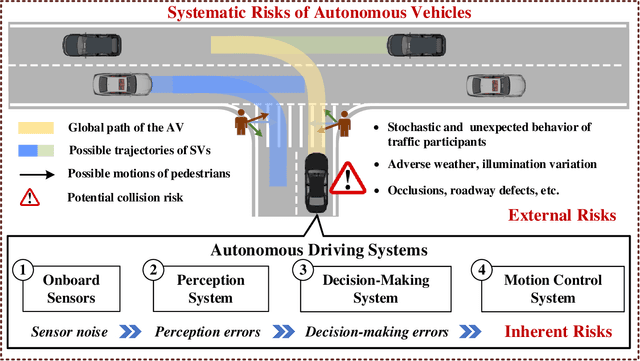

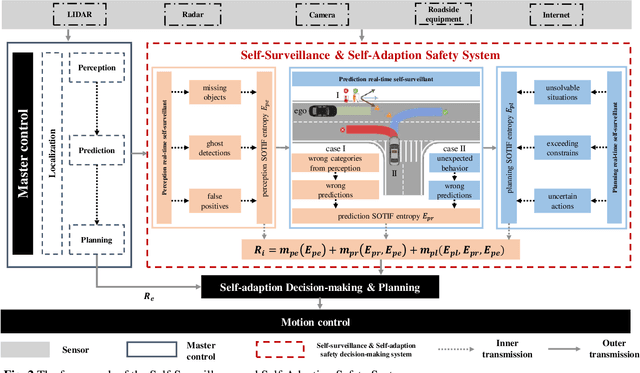
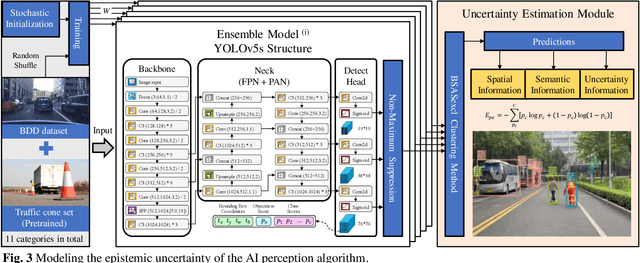
Abstract:Autonomous driving confronts great challenges in complex traffic scenarios, where the risk of Safety of the Intended Functionality (SOTIF) can be triggered by the dynamic operational environment and system insufficiencies. The SOTIF risk is reflected not only intuitively in the collision risk with objects outside the autonomous vehicles (AVs), but also inherently in the performance limitation risk of the implemented algorithms themselves. How to minimize the SOTIF risk for autonomous driving is currently a critical, difficult, and unresolved issue. Therefore, this paper proposes the "Self-Surveillance and Self-Adaption System" as a systematic approach to online minimize the SOTIF risk, which aims to provide a systematic solution for monitoring, quantification, and mitigation of inherent and external risks. The core of this system is the risk monitoring of the implemented artificial intelligence algorithms within the AV. As a demonstration of the Self-Surveillance and Self-Adaption System, the risk monitoring of the perception algorithm, i.e., YOLOv5 is highlighted. Moreover, the inherent perception algorithm risk and external collision risk are jointly quantified via SOTIF entropy, which is then propagated downstream to the decision-making module and mitigated. Finally, several challenging scenarios are demonstrated, and the Hardware-in-the-Loop experiments are conducted to verify the efficiency and effectiveness of the system. The results demonstrate that the Self-Surveillance and Self-Adaption System enables dependable online monitoring, quantification, and mitigation of SOTIF risk in real-time critical traffic environments.
PeSOTIF: a Challenging Visual Dataset for Perception SOTIF Problems in Long-tail Traffic Scenarios
Nov 07, 2022
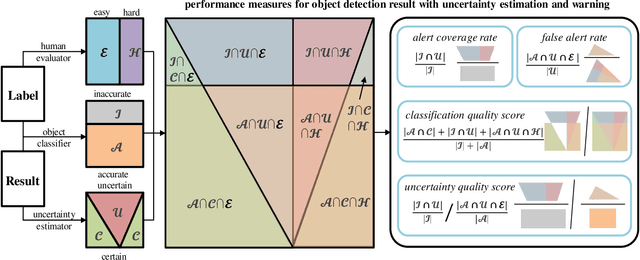
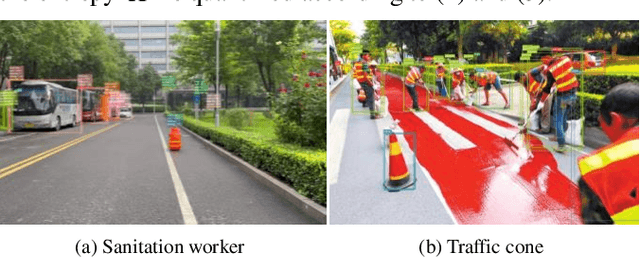
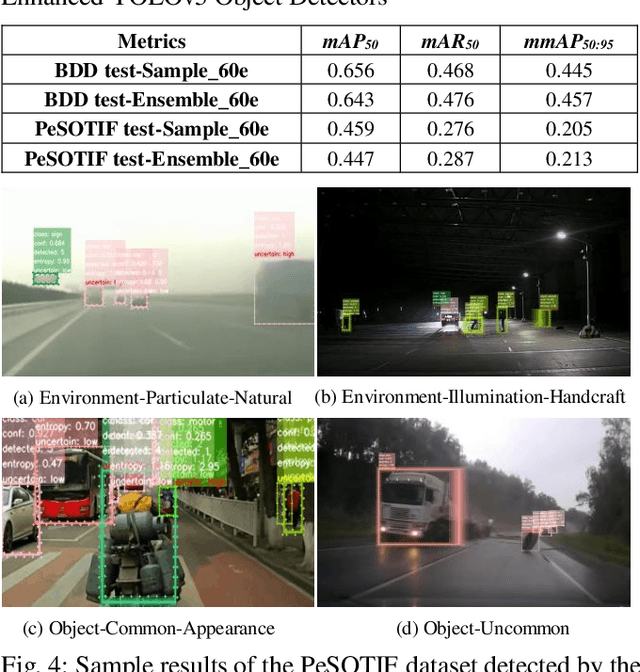
Abstract:Perception algorithms in autonomous driving systems confront great challenges in long-tail traffic scenarios, where the problems of Safety of the Intended Functionality (SOTIF) could be triggered by the algorithm performance insufficiencies and dynamic operational environment. However, such scenarios are not systematically included in current open-source datasets, and this paper fills the gap accordingly. Based on the analysis and enumeration of trigger conditions, a high-quality diverse dataset is released, including various long-tail traffic scenarios collected from multiple resources. Considering the development of probabilistic object detection (POD), this dataset marks trigger sources that may cause perception SOTIF problems in the scenarios as key objects. In addition, an evaluation protocol is suggested to verify the effectiveness of POD algorithms in identifying the key objects via uncertainty. The dataset never stops expanding, and the first batch of open-source data includes 1126 frames with an average of 2.27 key objects and 2.47 normal objects in each frame. To demonstrate how to use this dataset for SOTIF research, this paper further quantifies the perception SOTIF entropy to confirm whether a scenario is unknown and unsafe for a perception system. The experimental results show that the quantified entropy can effectively and efficiently reflect the failure of the perception algorithm.
SIND: A Drone Dataset at Signalized Intersection in China
Sep 06, 2022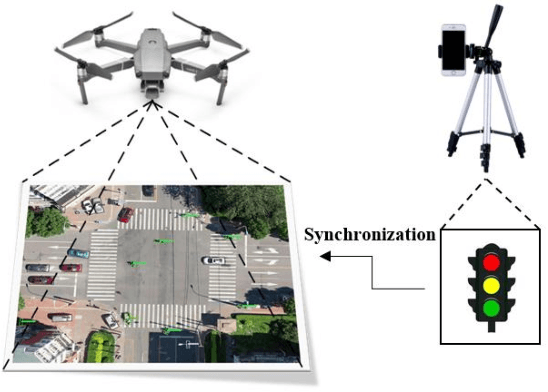
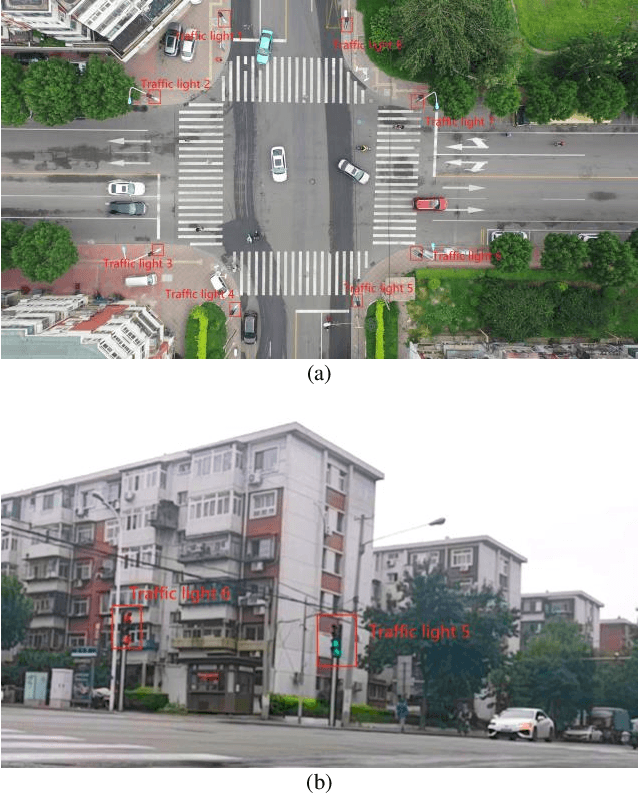
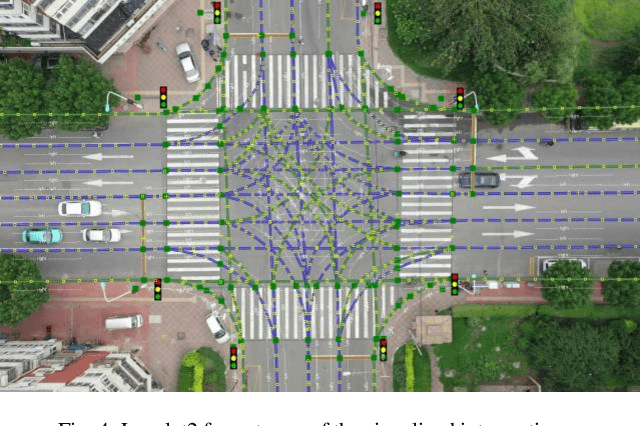
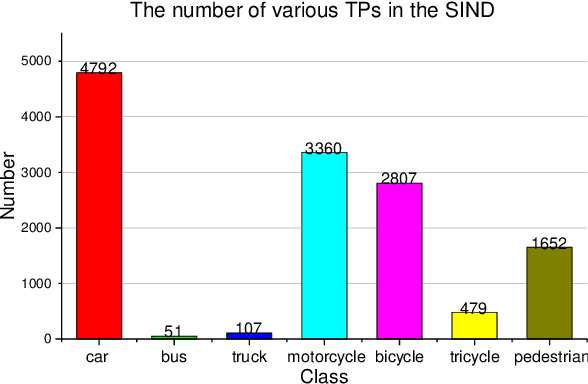
Abstract:Intersection is one of the most challenging scenarios for autonomous driving tasks. Due to the complexity and stochasticity, essential applications (e.g., behavior modeling, motion prediction, safety validation, etc.) at intersections rely heavily on data-driven techniques. Thus, there is an intense demand for trajectory datasets of traffic participants (TPs) in intersections. Currently, most intersections in urban areas are equipped with traffic lights. However, there is not yet a large-scale, high-quality, publicly available trajectory dataset for signalized intersections. Therefore, in this paper, a typical two-phase signalized intersection is selected in Tianjin, China. Besides, a pipeline is designed to construct a Signalized INtersection Dataset (SIND), which contains 7 hours of recording including over 13,000 TPs with 7 types. Then, the behaviors of traffic light violations in SIND are recorded. Furthermore, the SIND is also compared with other similar works. The features of the SIND can be summarized as follows: 1) SIND provides more comprehensive information, including traffic light states, motion parameters, High Definition (HD) map, etc. 2) The category of TPs is diverse and characteristic, where the proportion of vulnerable road users (VRUs) is up to 62.6% 3) Multiple traffic light violations of non-motor vehicles are shown. We believe that SIND would be an effective supplement to existing datasets and can promote related research on autonomous driving.The dataset is available online via: https://github.com/SOTIF-AVLab/SinD
 Add to Chrome
Add to Chrome Add to Firefox
Add to Firefox Add to Edge
Add to Edge